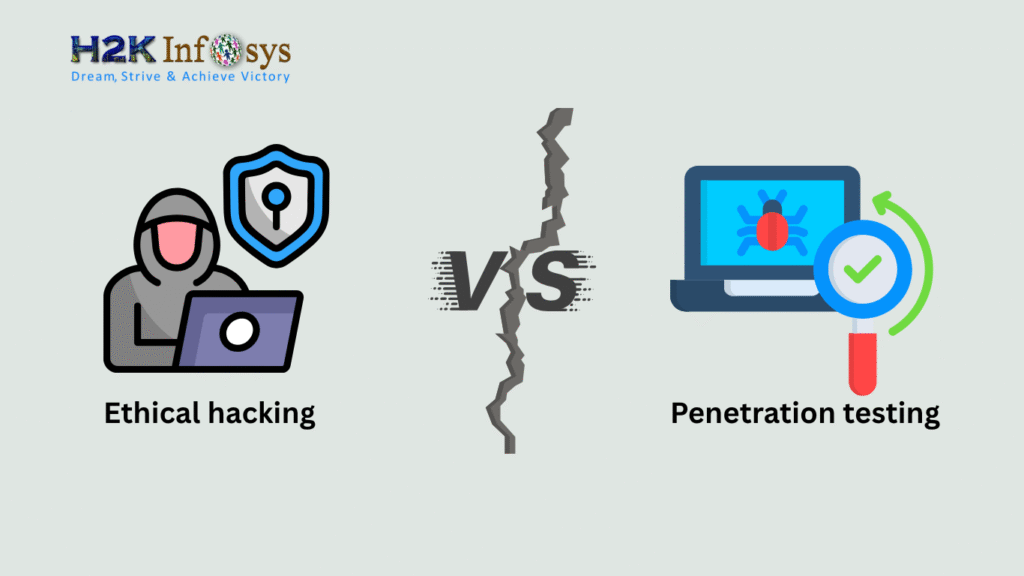Maintainability testing is the process of testing the system’s ability to update, modify the application if required. This is very important part as the system is subjected to changes all through the software life cycle. Once the system is deployed to production environment, the software requires maintenance. The software is expected to undergo several changes to fix defects, add new functionalities, modify the existing functionalities and changes in non functional characteristics of software.
To perform the maintainability testing:
- The tester should verify the development of the standards for structured programming, standards for database approach and standards for user interfaces.
- Verify the input, processing and output whether they are implemented separately
- Verifying the reusability feature by assigning proper parameter with necessary conditions for programs.
- Verify the system is properly distributed and algorithms are optimised.
Maintainability testing use the maintainability requirements of the software it is the effort required to effect the change under the following categories like:
- Corrective maintenance: In this test, the system is measured to diagnose and fix the problems as soon as it is identified.
- Perfective maintenance: in this test, the system is measured in terms of time taken to make the effort for enhancements.
- Adaptive maintenance: This test is used to for adapting the changes in the environment. The effort required to make the adaptations required by the system.
- Preventive maintenance: This test refers to reduce the future maintenance costs.
When maintenance is performed with the prescribed procedures and resources a characteristic design and installation is expressed, as the portability of an item will be restored to a specified conditions with a given period of time. The ease with which maintenance of the functional unit which can be performed with prescribed requirements.
























23 Responses
Maintainability testing is the process of testing the system’s ability to update, modify the application if required.
Maintainability testing is the process of testing the system’s ability to update, modify the application if required. Once the system is deployed to production environment, the software requires maintenance.
Maintainability is necessary for
– To fix the defects
-to add new functionalities
-make changes to existing functionalities
– make changes in non functional characteristics of software
Advantages of maintainability testing
– It makes future maintenance easier
-when the software is repaired or replaced it makes the software more better than the previous one
-effective for future maintenance costs
1. Maintainability testing:
Maintainability testing is the process of testing the system’s ability to update, modify the application if required. This is very
important part as the system is subjected to changes all through the software life cycle.
2. Advantages of Maintainability testing:
– The maintainability testing is effective for the future maintenance and reduces the cost of maintainance of the software or
system.
– To fix the defects as soon as they are detected.
– Adaption of system to meet new requirements.
In Maintainability testing, evaluate the software or system’s ability
to get modify the existing functionalities and changes in nonfunctional characteristics of software without any
issues, in terms to fix defects, to modify the new functionalities to add new functionalities,
Prevention of unexpected failures, Adapting the changing environment, to reduce the future maintenance costs,
all through the software life cycle system
after software deployed to the production environment, the software requires
maintenance to satisfy the user and meet the changing requirement.
To perform this testing:
1.as tester should verify the development of the standards for structured programming, standards for database approach
and standards for user interfaces.
2.Verify the input and output processing are implemented separately
3.verifying systems maintainability as per users expectations.
Maintainability is the capability of the software to readily go through any type of changes, to update , in order to meet the requirements.It’s performed in following categories:
1.Correction of errors or faults,
2.Additional functionality,
3.Adapting the changing environment,
4.Future maintenance.
Maintainability testing is to test the system ability to update and modify whenever it is requires. The application undergoes lot of changes during software development life cycle by fixing defects, introducing new functionalities, modifying existing functionalities and non functional characteristics.
To perform this testing the tester should verify the development standards for programs, database and user interface.
verify the input, processing and output to make sure they implemented separately
verify the re usability feature by assigning related parameters along with the right condition in the system
verify the the system is properly distributed and the algorithms are optimized.
Categories:
Corrective Maintenance: This is to test the ability of system to diagnose the defect and fix the problem.
Perfective maintenance: In this testing , the system is to measure the time taken to make the effort for the enhancement.
Adaptive Maintenance: This is to test the adaptability of the system in different environment and the efforts to adapt the changes by system.
Preventive Maintainable: This is to reduce the future cost of the maintenance.
Maintainability testing is the process of testing the system’s ability to update, modify the application if required. Once the system is deployed to production environment, the software requires maintenance. The software is expected to undergo several changes to fix defects, add new functionalities, modify the existing functionalities and changes in non functional characteristics of software.
Maintainability testing use the maintainability requirements of the software it is the effort required to effect the change under the following categories like:
Corrective maintenance: In this test, the system is measured to diagnose and fix the problems as soon as it is identified.
Perfective maintenance: in this test, the system is measured in terms of time taken to make the effort for enhancements.
Adaptive maintenance: This test is used to for adapting the changes in the environment.
Preventive maintenance: This test refers to reduce the future maintenance costs.
It basically defines that how easy it is to maintain the system. This means that how easy it is to analyze, change and test the application or product. Maintainability testing shall use a model of the maintainability requirements of the software/system. The maintainability testing shall be specified in terms of the effort required to effect a change under each of the following four categories:
Corrective maintenance: This can be measured in terms of the time taken to diagnose and fix problems identified within that system.
Perfective maintenance: This can also be measured in terms of the effort taken to make required enhancements to that system. This can be tested by recording the time taken to achieve a new piece of identifiable functionality such as a change to the database, etc.
Adaptive maintenance: This can be measured in the way described above for perfective maintainability testing.
Preventive maintenance: This refers to actions to reduce future maintenance costs.
What is maintainability testing?
Maintainability testing is the process of testing the system’s ability to update,
modify the application if required. This is very important part as the system is
subjected to changes all through the software life cycle. Once the system is
deployed to production environment, the software requires maintenance.
What are the advantages of maintainability testing?
Advantages of Maintainability testing:
–The maintainability testing is effective for the future maintenance and reduces
the cost of maintainance of the software or system.
–To fix the defects as soon as they are detected.
–Adaption of system to meet new requirements.
It is the process of testing the system’s ability to update, modify the application if required.
The system is subjected to undergo a lot of changes once deployed to production.
the s/w is expected to undergo several changes
-to fix defects
-add new functionalities
-modify the existing functionalities
-changes in non functional characteristics of s/w.
The perform maintainability testing the tester should
*verify the standards for structured programming ,database and user interface.
*verify input processing and output are implemented correctly.
*verify re-usability feature by assigning proper parameters.
*verify the system is properly distributed and algorithms are optimized.
The maintainability testing shall be specified in terms of the effort required to effect a change under each of the following four categories:
Corrective Maintenance- time taken to diagnose and fix problems as soon as it is identified
Perfective maintenance-time taken to make the effort for enhancements.
Adaptive maintenance-the effort required to make required adaptations to that system
Preventive maintenance-actions to reduce future maintenance costs.
1.maintainability testing
Maintainability testing is the process of testing the system’s ability to update, modify the application if required. This is very important part as the system is subjected to changes all through the software life cycle.
2.Advantages of maintainability testing
Corrective maintenance:diagnose and fix the problems as soon as it is identified.
Perfective maintenance: terms of time taken to make the effort for enhancements.
Adaptive maintenance: adapting the changes in the environment. The effort required to make the adaptations required by the system.
Preventive maintenance: reduce the future maintenance costs.
Maintainability testing is a process of the testing software to modify, update if necessary as system undergoes various changes during software development life cycle. The four categories of Maintainability testing are:
Corrective maintenance: the system is measured to diagnose and fix the problems as soon as it is identified.
Perfective Maintainability: the system is measured in terms of time taken to make the effort for enhancements.
Adaptive Maintainability :This test is used to for adapting the changes in the environment.
Preventive maintenance: This test refers to reduce the future maintenance costs.
Maintainability is the process of testing the system’s ability to update, modify the application if required. Once the system is deployed to Production Environment, the software is expected to undergo several changes like:
->Fix the defects.
->Add new functionalities.
->Modify the existing functionalities.
->Changes in non-functional characteristics of the software.
To perform Maintainability Testing, the Tester Should:
->Verify the development of the standards for structured programming, database approach and user interface.
->Verify the input, processing and output whether they are implemented seperately.
->Verify the reusability features.
->Verify the system is properly distributed and algorithms are optimized.
Maintainability Testing Categories:
->CORRECTIVE MAINTENANCE : Check the time taken to diagnose and fix the problem as soon as it is identified.
->PERFECTIVE MAINTENANCE: Check the time taken to make the effort for enhancements.
->ADAPTIVE MAINTENANCE: Test the effort required to make the adaption required by the system.
->PREVENTIVE MAINTENANCE: Check the measures taken to reduce the future maintenance costs
It is testing process after production to update and modification of the system/or software in the maintain life cycles.
So, maintenance is performed on regular basis as per described procedures and originality of the system/or software items will be restored.
Maintainability testing is the process of testing the system’s ability to update, modify the application if required.
The advantages of this type of testing are –
• Analyzability: It identifies the defects along with the identification of part of the system which needs to be changed.
• Changeability: It estimates the ability of software to undergo changes.
• Stability: It estimates the capability to remain stable after modification.
• Testability: The inherent characteristic of software is tested to determine the testing of updated system.
• Maintainability compliance: This does the evaluation of five above mentioned attributes.
Maintainability Testing is process of testing to ensure that system after software updates patches , upgrades .and modified the files if required .
Advantage of Maintainability Testing are :
1. to use correction of faults , to identify the bug sooner .
2. updation of new system Environment.
3. Additional of new functionality and removal of functionality .
4. reduce future maintenance cost .
What is maintainability testing?
Maintainability testing is the process of testing the system’s ability to update,
modify the application if required. This is very important part as the system is
subjected to changes all through the software life cycle. Once the system is
deployed to production environment, the software requires maintenance.
Advantages of maintainability testing?
Tester should verify the development of the standards for structured programming, standards for database approach.
Check the time taken to diagnose and fix the problem as soon as it is identified.
What is maintainability testing ?
It is the process to test or ensure that the software can update/modify/maintain itself.
It can be measured using the following process:
a) Perfective testing
b) Perfective testing
c) Adaptive testing
d) Preventive testing
Maintability testing is the ability of the software to easily ungergo changes, updation in order to meet clients’ requirements.
Maintainability testing necessary for
1. correction of faults
2. adaption of system to meet new requirements
3. additional of new functionality or removal of functionality
4. ability to reduce future maintenance costs
Advantages are
1. to ensure ability of system’s software to undergo changes
2. guarantees sofware’s efficiency to undergo frequently changing requirements of clients
3. effective for future maintenance of costs
Maintainability testing is the process of testing the system’s ability to update, modify the application if required.
In order to perform tester should verify the development, standards, input, reusability feature and verify the system.